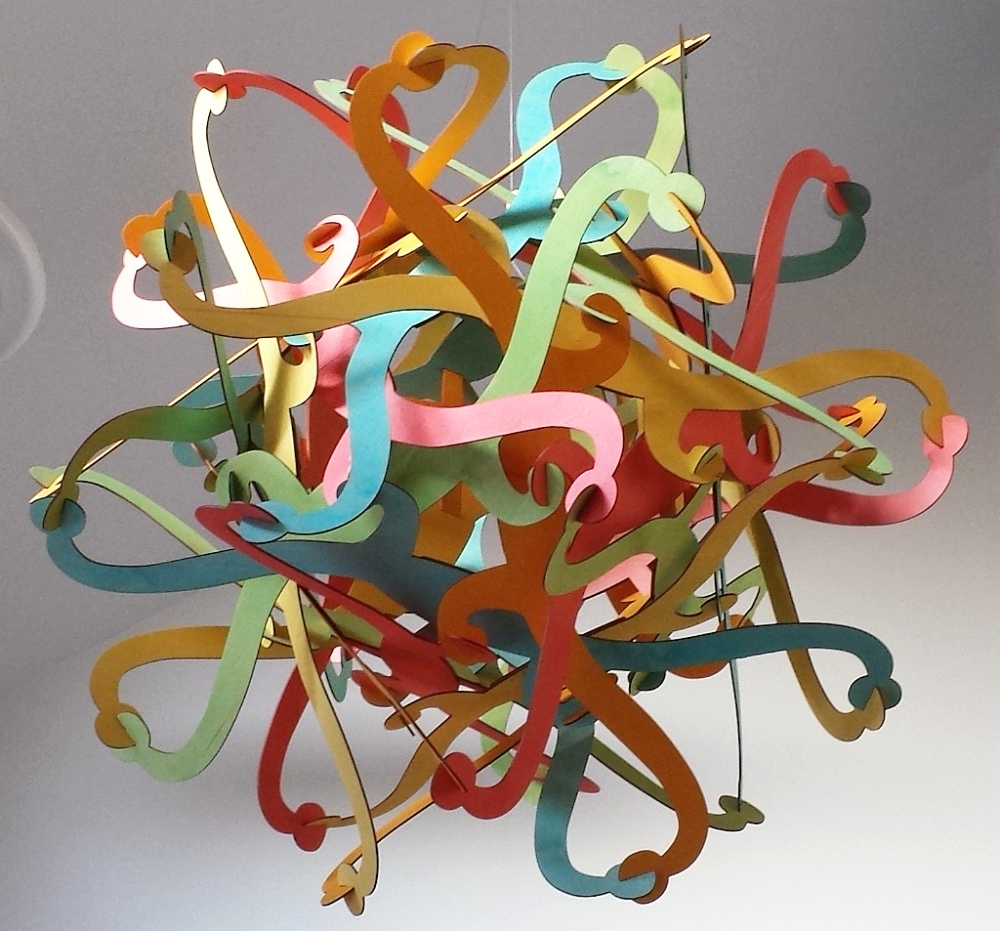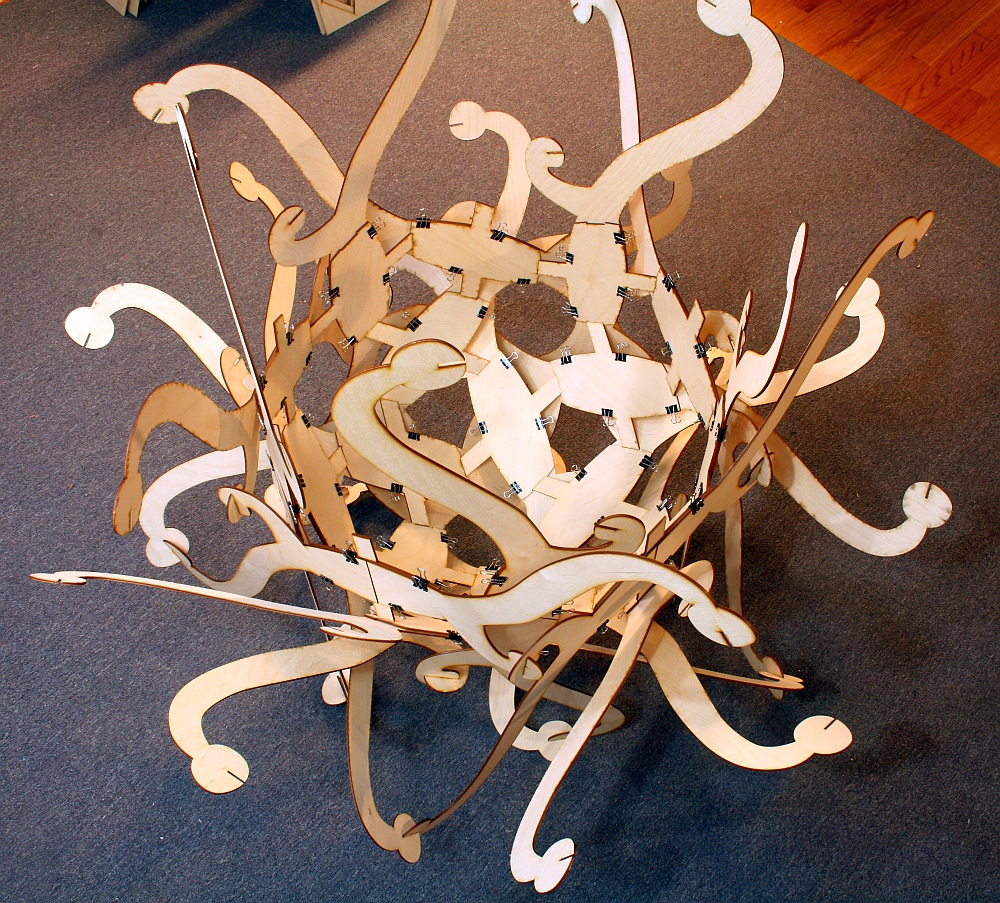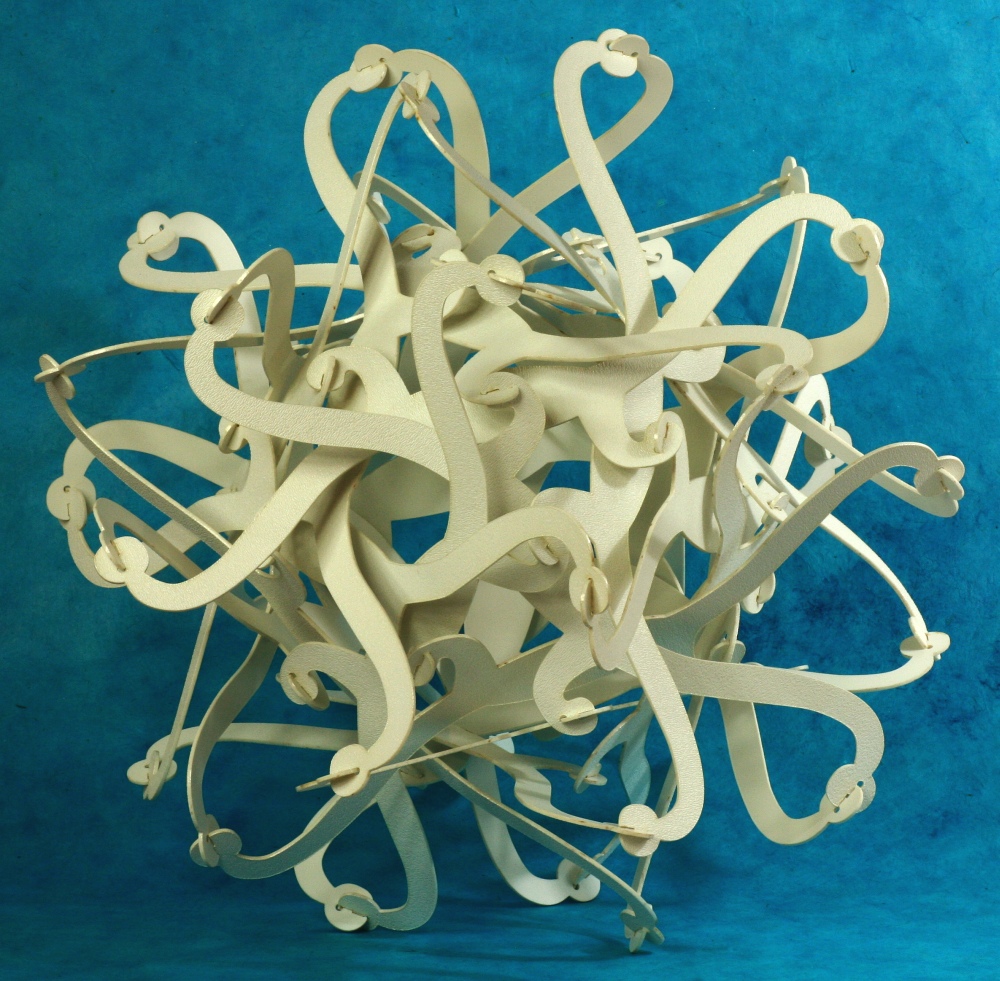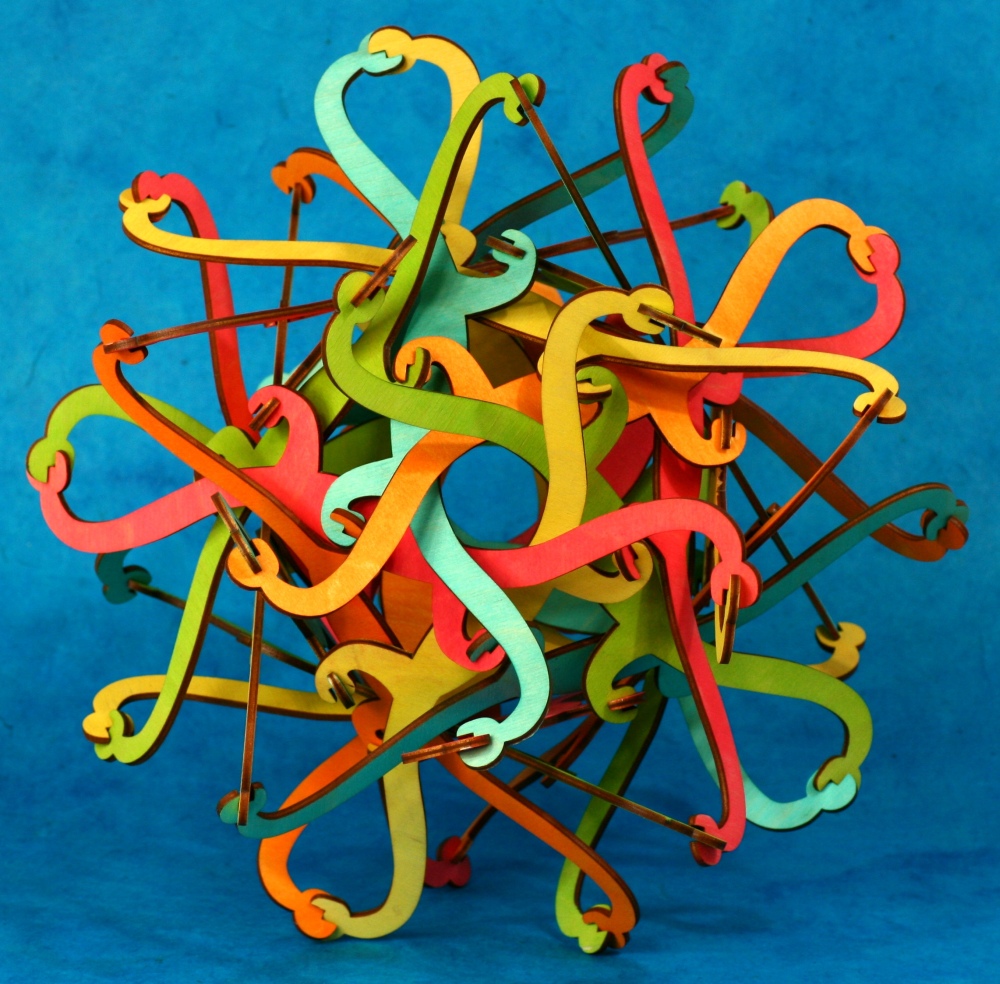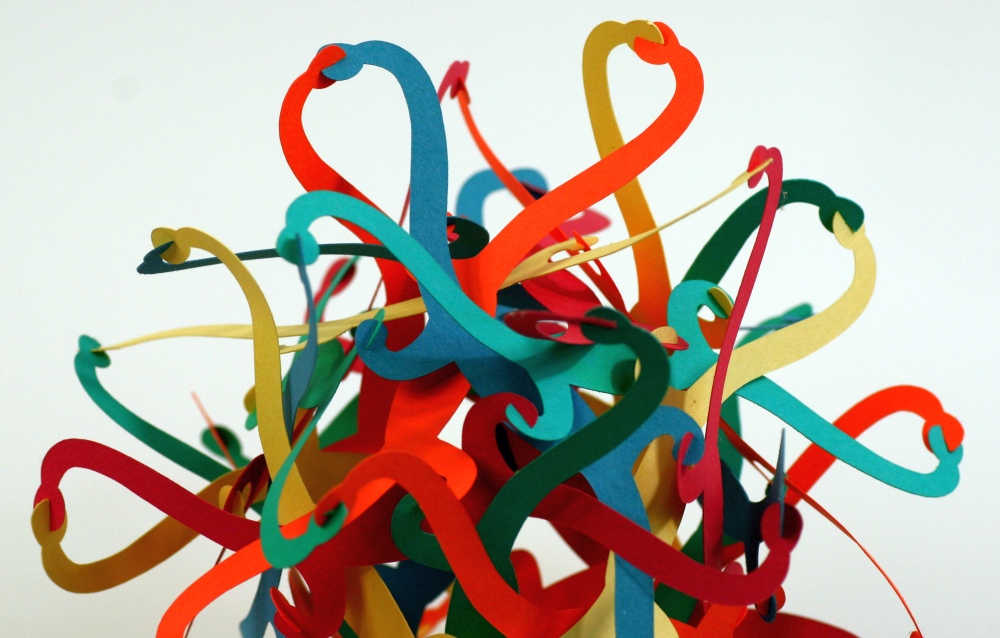On November 7-8, 2016,
I worked with students at BBA to create the parts and assemble
the sculpture. The image above shows the components while
the finish is drying. Each is a module made of three
laser-cut Baltic birch plywood pieces that are stained and glued
together. For the complete sculpture, there are six
modules in each of five different colors.
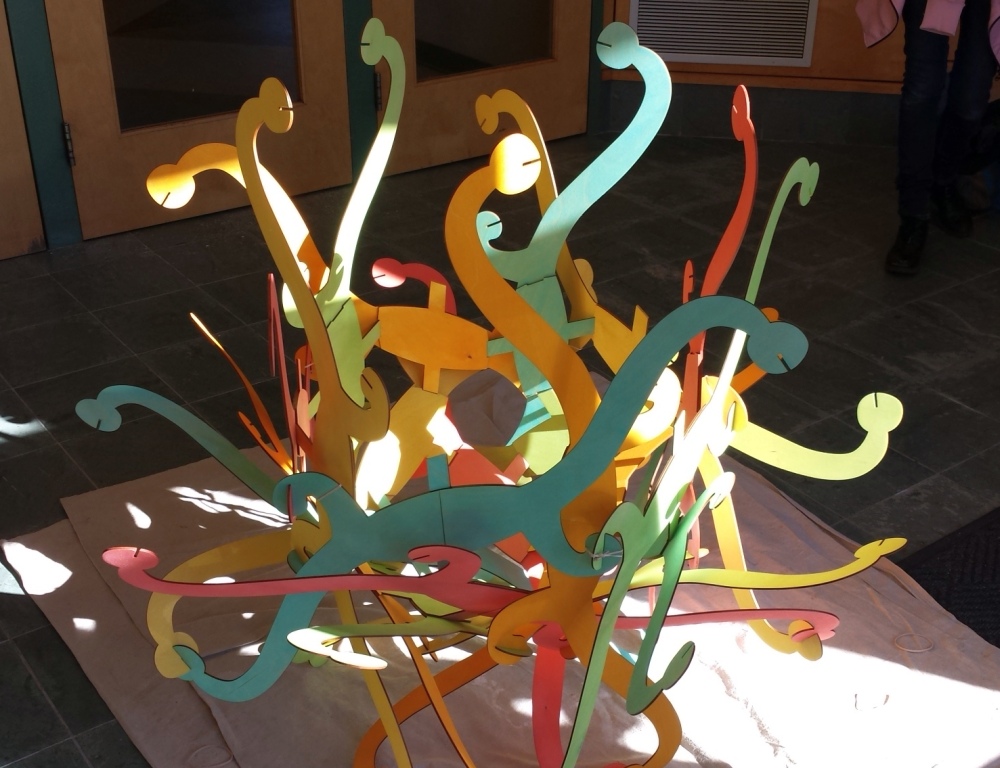
Assembling it was a tricky exercise
in geometry and coloring. They interlock in a symmetric
geometric arrangement based on the thirty face planes of a
rhombic triacontahedron. Above, it is partially
complete. You might notice how the two small tabs near the
middle of each part lock it to its neighbors for extra rigidity.
The week, before, I test-built the
structure in my studio in NY to check the fit. The image
above gives a better view of the interior and shows the parts
held together with small binder clips before I had sanded,
stained, and glued them.
I also made a snap-together model
from flexible ABS plastic sheet. This was intended for
people to assemble and take apart repeatedly, so they can
understand the structure before putting together the full-scale
version. It makes for a nice puzzle.
A few weeks before that, I had made
a smaller (13-inch) model of the design in laser-cut wood, to
check its rigidity and explore the color pattern. The
parts are arranged with a five-color pattern based on the
compound of five cubes. The order of the five colors of heads is
different around each of the twelve five-sided openings.
(The twelve orders are the even cyclic permutations of each
other.) The six pieces of any one color never touch, but
are all parallel or orthogonal, arranged like the six faces of a
cube. (This smaller model is part of the 2017
Joint Mathematics Meetings Art Exhibition.)
Ten years before making this
sculpture, I came up with the general design (which I had then
called Monsters) and made a
paper version (i.e., modular kirigami), but I hadn't had
an occasion to create a sculpture with this design in a more
permanent material until this year.
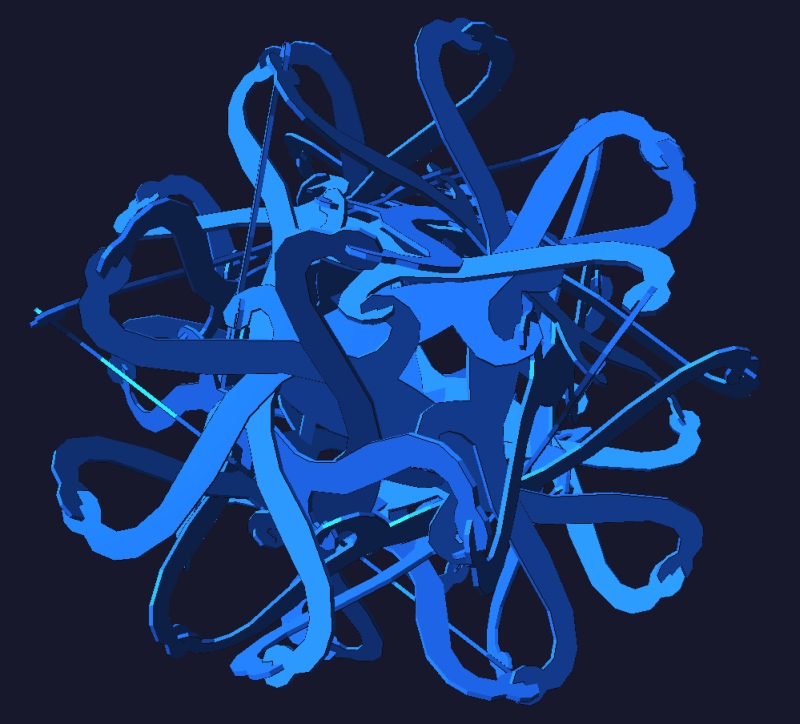
And my first models
of the design were all digital renderings.
Thank you to all the students at the
Burr and Burton Academy
who participated in the assembly, to Bonnie Niles for wonderfully
arranging everything, and to Paul Molinelli for generous
assistance in the shop and installing the hanging cable.
